Guide to Purchasing Hockey Sticks
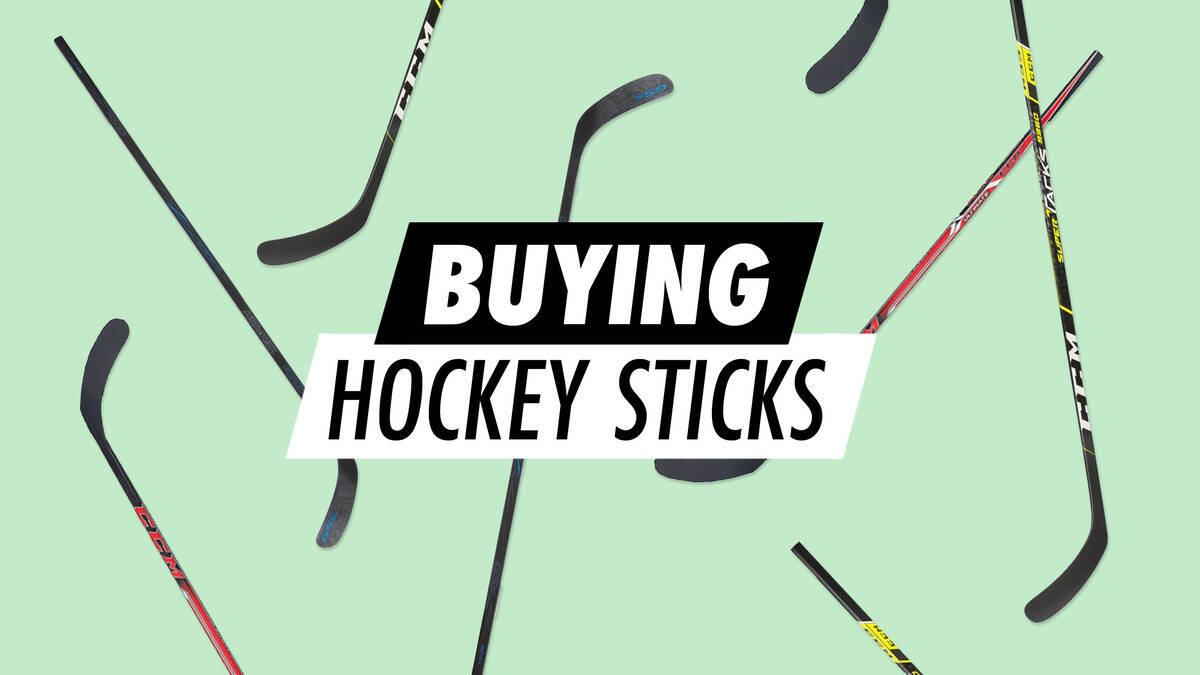
Selecting a hockey stick involves aligning it with your height, skill level, and play style. Key factors include size, flex, and the type of surface you’ll be engaging with.
With numerous choices available, discovering the ideal hockey stick can seem daunting. Regardless of whether your game is roller hockey or ice hockey, having the appropriate stick is essential for optimal performance. Below are vital factors to guide you in choosing the ideal hockey stick, tailored to your skills, style, and playing conditions.
- Surface Type: Pick a stick based on your playing environment—ice, roller, or street.
- Material: Opt for a stick crafted from robust yet lightweight materials.
- Length: Choose the stick length according to your height and style of play.
- Flex: Select a flex that aligns with your strength and shot style.
- Handedness: Decide on left or right according to your grip preference.
For detailed insights into these criteria, continue reading!
Overview
Types of Hockey Sticks: Ice, Roller, and Street
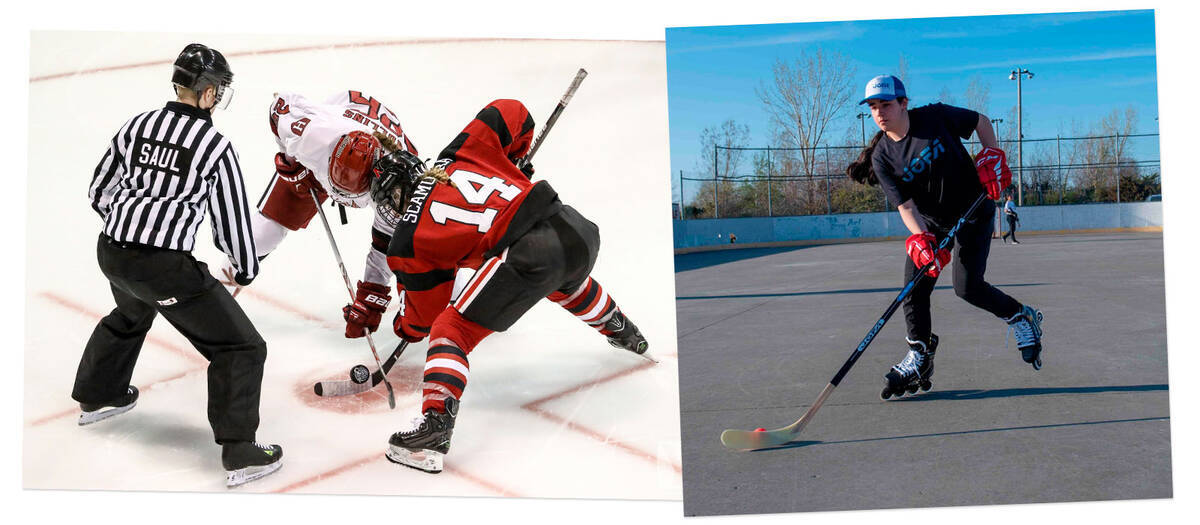
Initially, consider if your stick will be used for ice hockey, roller hockey, or street hockey. The stick's suitability heavily depends on your playing surface and style.
- Hockey sticks for ice hockey: Engineered specifically for use on ice surfaces
- Hockey sticks for roller hockey: Tailored for roller hockey environments such as smooth asphalt or court tiling.
- Hockey sticks for street hockey: Constructed to withstand rugged outdoor surfaces like asphalt, with durability to handle wear and tear effectively.
- Multi-purpose hockey sticks: Perfect for those who dabble in both street and indoor hockey, allowing you to hit two birds with one stone.
When reviewing a hockey stick's product description, be mindful of its design specifics for either a particular type of hockey or surface.
Can You Use Ice Hockey Sticks for Roller Hockey?
Utilising an ice hockey-specific stick for roller hockey is not advised as it accelerates blade wear on harsher surfaces. It’s strongly recommended to utilise the stick per the manufacturer's intended purpose for extended usability.
What Materials Make Up Hockey Sticks?

Hockey sticks are composed of materials like carbon fibre, fibreglass, Kevlar, and wood—wood initially being the sole material for stick-making. Nowadays, composite materials—often a combination of fibreglass and carbon fibre—are prevalent.
The material used in a hockey stick's blade differs from that in the shaft. This is attributed to the shaft’s need to be both durable and lightweight, whereas the blade must be sturdy enough to endure the impact of pucks and balls.
Shafts are designed for high strength-to-weight ratios and sufficient flexibility to withstand bending during intense play. Different composite materials are fine-tuned for these properties, reminiscent of certain hardwood characteristics.
Meanwhile, hockey stick blades must also withstand significant impacts without compromising on the player's ability to handle. They can be produced from carbon fibre, fibreglass, wood, or plastic. The composition and contour of the blade are vital for enhancing puck control and shot precision.
Composite vs. Wood Hockey Sticks
- Wood hockey sticks: Timeless and robust, these are often heavier but offer a traditional playing feel. Commonly favoured in street or roller hockey due to their durability.
- Composite hockey sticks: Constructed from materials like carbon fibre, Kevlar, or fibreglass, composite sticks are lighter and more flexible. Most often preferred for ice hockey, they are also excellent for roller hockey if a high-performance stick is desired. Though generally pricier, they offer superior energy efficiency for shots and excellent control.
Explore our ranges of roller and ice hockey sticks, filtering by materials used for the shaft and blade as you see fit.
Essential Tips for Picking the Right Hockey Stick Length

Choosing the correct hockey stick length is essential for optimising your control and shot power. Consider your height, skill level, style of play, and personal preferences when selecting stick length.
Short Vs. Long Hockey Stick
A short stick offers manoeuvrability and control, whereas a longer stick provides better reach. Offensive players typically opt for shorter sticks, while defensive players usually prefer longer ones.
Determining the Correct Hockey Stick Length
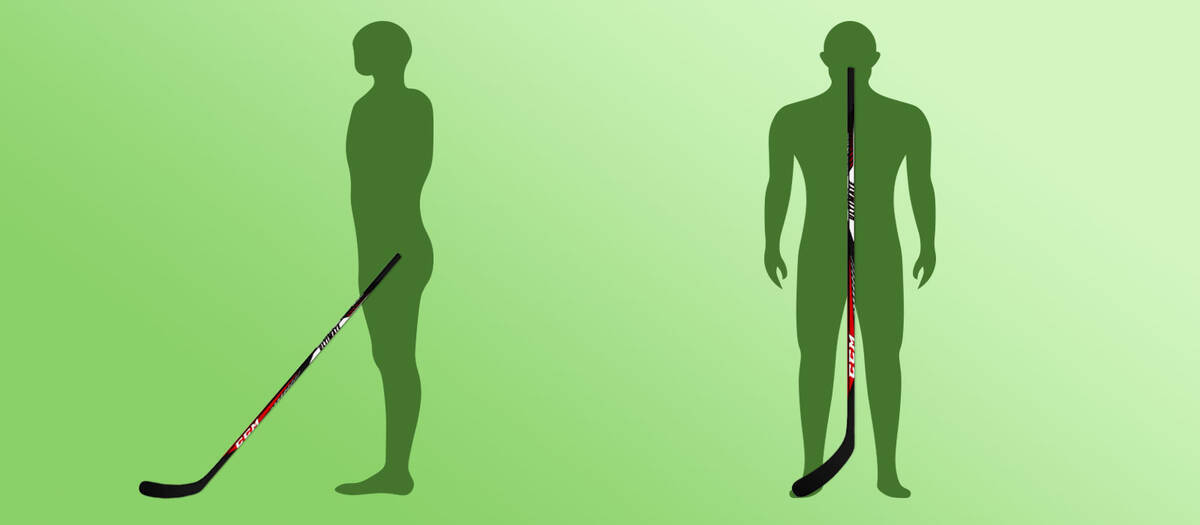
Measure by placing your arm at your side, wearing skates, and grasp the stick's end. Slightly bend your arm close to your body, ensuring the blade's tip points slightly upwards.
Alternatively, stand upright with or without your skates, holding the stick vertically towards your chin.
- With skates: The stick should not extend above your chin.
- Without skates: The stick should not exceed your nose tip.
Some players intentionally buy sticks slightly longer to custom-cut them to their liking. However, cutting your stick can void any existing warranty.
Browse our range of roller and ice hockey sticks by length, ensuring you find the perfect fit. If unsure, our comprehensive hockey stick size guide is a valuable resource.
Understanding Hockey Stick Flex
Flex refers to the extent a hockey stick bends under force, such as when taking a shot. A higher flex number indicates a stiffer stick. Selecting the right flex depends on your strength and preferred shot type.
- Lower flex: Promotes finesse and accuracy in shots. Recommended for beginners or younger players due to its ease of use.
- Higher flex: Enables formidable, forceful shots. Suited for advanced players seeking hard-hitting performance.
Exploring Hockey Stick Blade Curves
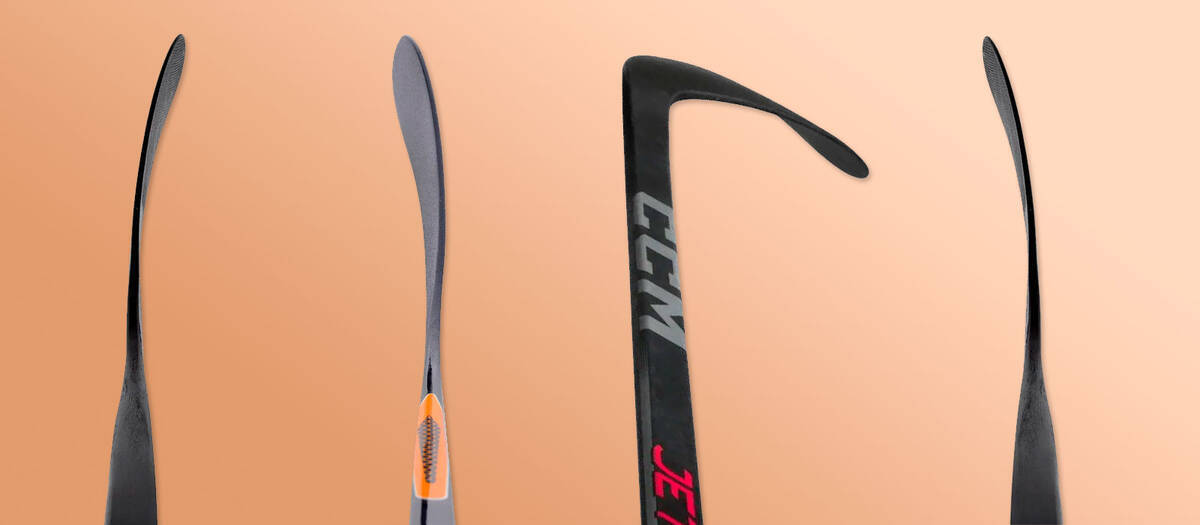
The blade curve is crucial for puck or ball handling during shots, passes, and dribbling. Experimenting with different curves will help you determine what feels most natural for your play style.
By forming a 'pocket' for the puck or ball, the curve enhances control and ensures consistent, dynamic shots.
Deciding Between Left-Handed or Right-Handed Hockey Sticks
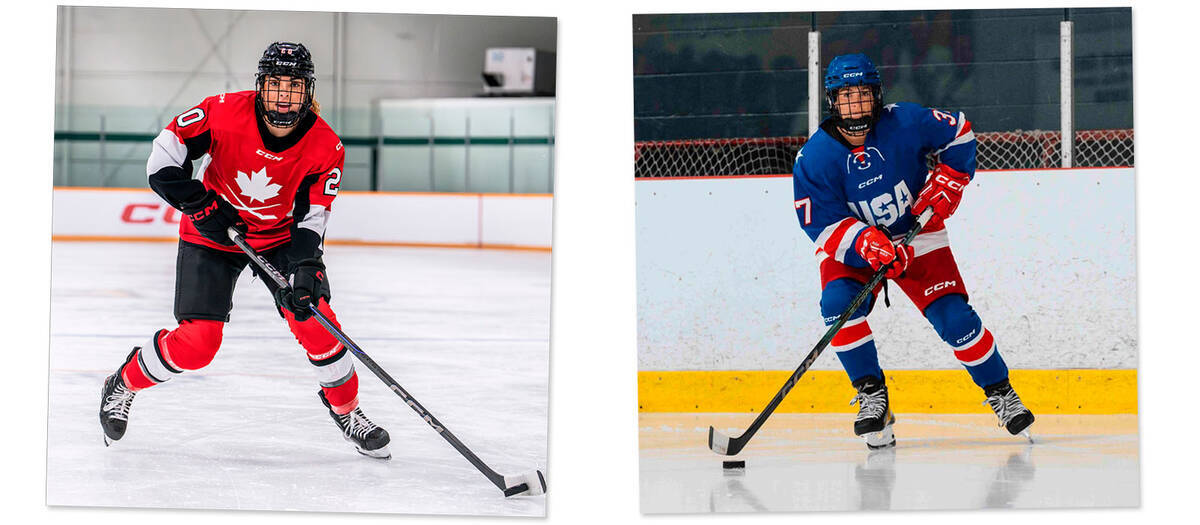
Your choice between a left- or right-handed hockey stick comes down to hand positioning while guiding the stick. If your right hand guides from the top, a left-handed stick is ideal (and the opposite is true). This trait is not dependent on natural hand dominance, but comfort with the preferred stick position.
If uncertain, grip a hockey stick as if preparing to shoot, determining which side feels more natural.
- Left-handed hockey stick: Choose this if the puck aligns with your left side, with the right hand guiding from the top and the left hand near the blade.
- Right-handed hockey stick: Opt for this if the puck sits on your right, with the left hand at the top and the right hand close to the blade.
The video below features Nicklas demonstrating how to ascertain the appropriate hand orientation for your hockey playing style.
Remember to check out our extensive roller and ice hockey selections, stocked with everything hockey-related:
